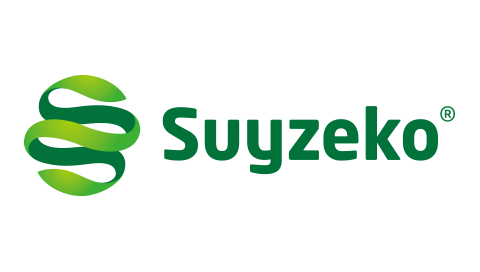

{{parseInt(detail_data.left_num) ? detail_data.left_num +' In Stock' :detail_data.zeroStockOrder==0?'Out of Stock':'Available'}}
transcranial magnetic brain stimulation infrared 810nm neurofeedback therapy machine
photobiomodulation, therapy machine, infrared light therapy, brain photobiomodulation 810nm, injury helmet therapy,
light therapy / therapy machine /
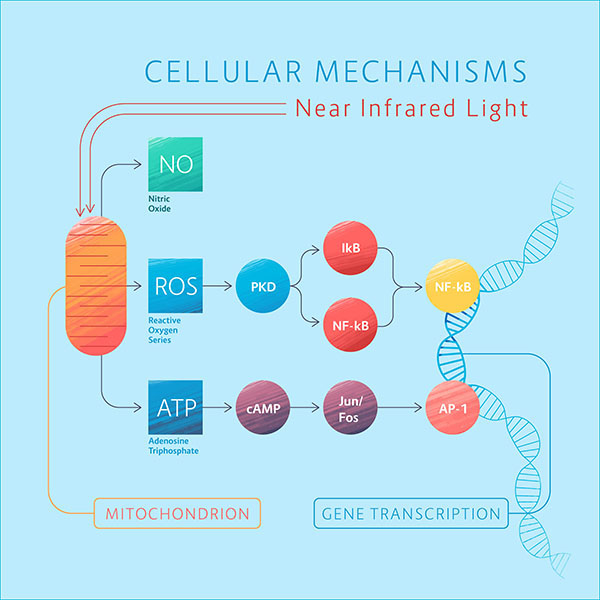
Photobiomodulation (PBM Therapy) previously known as Low Level Laser Therapy (LLLT) is the application of red and near infra-red light over injuries or lesions to improve wound and soft tissue healing, reduce inflammation and give relief for both acute and chronic pain. First developed in 1967, it is now commonly referred to as PBM.
Photobiomodulation is used to: increase the speed, quality and tensile strength of tissue repair; resolve inflammation and relieve pain (analgesia).
The red and near infrared light (600nm-1000nm) commonly used in PBM can be produced by laser or high intensity LEDs. The intensity of PBM lasers and LED's is not high like a surgical laser. There is no heating effect.
The effects of PBM are photochemical (like photosynthesis in plants). When the correct intensity and treatment times are used, red and near infrared light reduces oxidative stress and increases ATP. This improves cell metabolism and reduce inflammation. These effects can be enhanced with pulses however when analgesia is required there is a second mechanism which works best when a strong continuous beam is applied.
PBM devices are typically delivering 10mW - 500mW (0.01 -> 0.01 Watts). The power density typically ranges from 0.005W/Cm² -> 5 W/Cm².
PBM is popularly used for soft tissue injuries, joint conditions, neuropathic pain, non-healing leg and pressure ulcers.
What is Photobiomodulation Therapy (PBMT)?
Photobiomodulation Therapy (PBMT) is the best technical term for Low Level Laser Therapy (LLLT).
It is a light therapy using lasers or LEDs to improve tissue repair, reduce pain and inflammation wherever the beam is applied. Usually applied by a doctor, therapist or technician, treatments take about 10 minutes and should be applied two or more times a week.
Photobiomodulation has been used for many years on sports injuries, arthritic joints, neuropathic pain syndromes, back and neck pain. Over 700 randomised clinical trials have been published on Photobiomodulation, half of which are on pain.
Brain Photobiomodulation Machine
The Brain Photobiomodulation Machine is a therapeutic instrument based on the principle of photobiomodulation. It has a good therapeutic effect on traumatic events (stroke, traumatic brain injury, and global ischemia), degenerative diseases (dementia, Alzheimer's and Parkinson's), and psychiatric disorders (depression, anxiety, post traumatic stress disorder)
What is Photobiomodulation?
Photobiomodulation (PBM) describes the use of red or near-infrared light to stimulate, heal, regenerate, and protect tissue that has either been injured, is degenerating, or else is at risk of dying. One of the organ systems of the human body that is most necessary to life, and whose optimum functioning is most worried about by humankind in general, is the brain. The brain suffers from many different disorders that can be classified into three broad groupings: traumatic events (stroke, traumatic brain injury, and global ischemia), degenerative diseases (dementia, Alzheimer's and Parkinson's), and psychiatric disorders (depression, anxiety, post traumatic stress disorder). There is some evidence that all these seemingly diverse conditions can be beneficially affected by applying light to the head. There is even the possibility that PBM could be used for cognitive enhancement in normal healthy people. In this transcranial PBM (tPBM) application, near-infrared (NIR) light is often applied to the forehead because of the better penetration (no hair, longer wavelength).
Main Function
Specifications
| Name | Brain Photobiomodulation Machine |
| Model | GY-PDT1 |
| LED Wavelength | 810 nm |
| Led Quantity | 256 |
| Power(total helmet) | 15 W |
| Power(one LED) | 60 mW |
| Power | 24 mW/cm2 |
| Certificate | CE |
| OEM | Support |
| Color | White/Black |
| MOQ | 1 PC |
Indications
1. Traumatic events (stroke, traumatic brain injury, and global ischemia).
2. Degenerative diseases (dementia, Alzheimer's and Parkinson's).
3. Psychiatric disorders (depression, anxiety, post traumatic stress disorder).
Contraindication
1. Avoid direct exposure to the eyes, pregnant women's abdomen, melanoma, brown spots.
2. Taboo patients with early and middle stage malignant tumors.
3. Contraindications to patients with acute bleeding disorders.
What is Brain Injury?
Brain Injury is the “multiple disabilities arising from damage to the brain acquired after birth. It results in deterioration in cognitive, physical, emotional or independent functioning. It can be as a result of accidents, stroke, brain tumours, infection, poisoning, lack of oxygen, degenerative neurological disease etc.”
The National Community Services Data Dictionary (Australian Institute of Health and Welfare, Canberra, 2012)
Common Causes of Brain Injury
Accidents/Trauma
Traumatic Brain Injury occurs as the result of some external force being applied to the brain.
Stroke
Stroke usually occurs as the result of a haemorrhage or blockage to the blood vessels that supply blood to the various regions of the brain.
Tumour
Tumours cause damage to the surrounding brain tissue and structures as they grow within the brain.
Infection
Bacterial or viral infections can lead to an inflammation of the brain covering (meningitis) or the brain tissue itself (encephalitis).
Poisoning/Toxins
Alcohol acts as a toxin and the long term misuse of alcohol can cause damage to brain tissue.
Hypoxia/Anoxia
Hypoxia/anoxia refers to reduced or, complete, stopping of the flow of oxygen to the brain leading to injury to brain tissue. Can be caused by overdoses, failed hangings, or near drowning.
Degenerative Neurological Diseases
Conditions including Huntington’s Disease, Parkinson’s Disease, and Alzheimer’s Disease are caused by abnormal changes to brain cells in particular regions of the brain.
The disability called brain injury – sometimes called acquired brain injury, or “ABI” – refers to any damage to the brain that occurs after birth. That damage can be caused by an accident or trauma, by a stroke, by a brain infection, by alcohol or other drug abuse or by diseases of the brain like Parkinson’s disease.
Brain injury is common. According to the Australian Bureau of Statistics, over 700,000 Australians have a brain injury, with daily “activity limitations” and “participation restrictions”. Three in every four of these people are aged 65 or under. As many as two out of every three acquired their brain injury before the age of 25. Three-quarters of people with a brain injury are men.
The brain is the controller of the body’s movements and essential functions, such as breathing and blood pressure, and also our feelings, thoughts, and beliefs.
The brain is made up of billions of nerve cells which transmit information using a combination of electrical and chemical activity.
Its soft, jelly-like mass is cushioned inside the skull by cerebrospinal fluid. This fluid circulates around the brain and through a series of cavities in the brain called ventricles.
The brain is divided into a number of parts, which work together. The more these parts are coordinated and in tune with each other, the better the overall functioning of the brain.
The cerebral cortex is the largest part of the brain, and is divided into two hemispheres, the left and right.
The Brain’s Hemispheres
The left hemisphere mainly controls speech and language (talking, comprehension, reading, and writing).
The right hemisphere mainly controls visual perception and the interpretation of nonverbal information, such as understanding facial expressions and behavior.

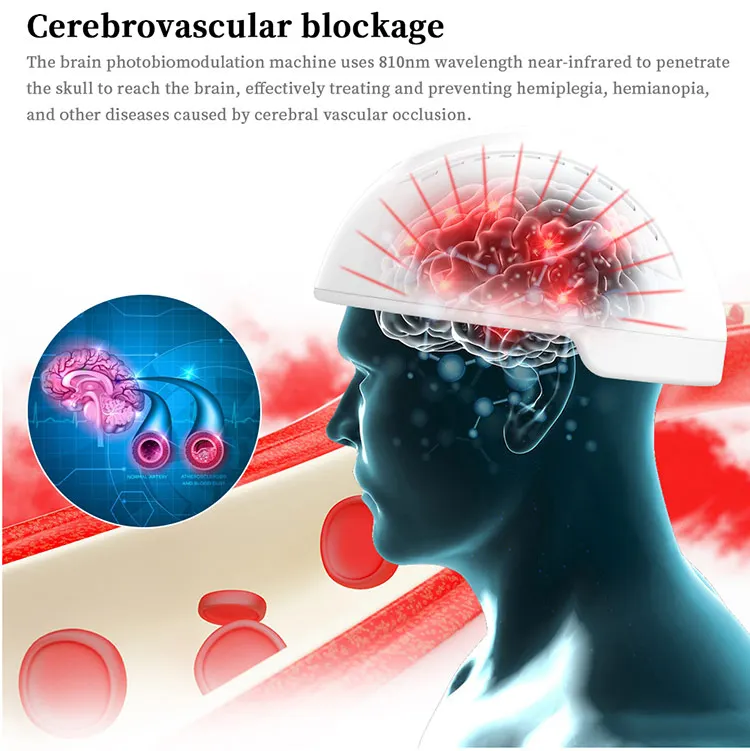
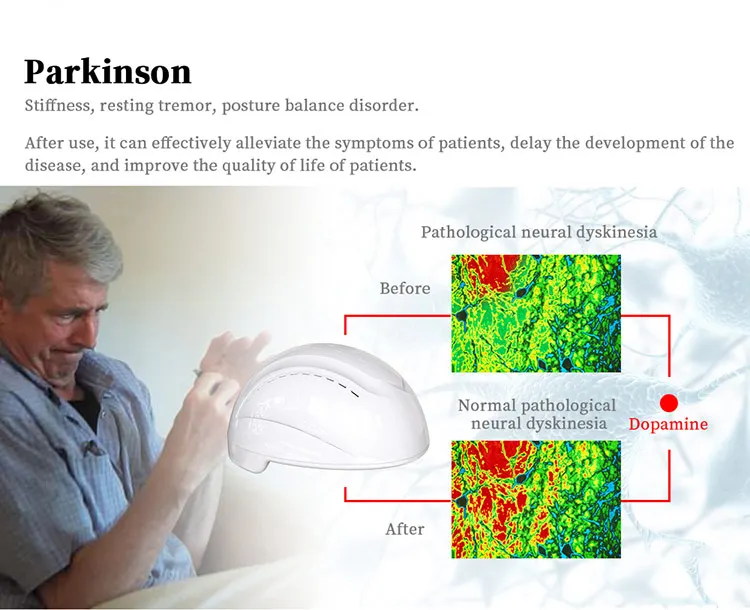
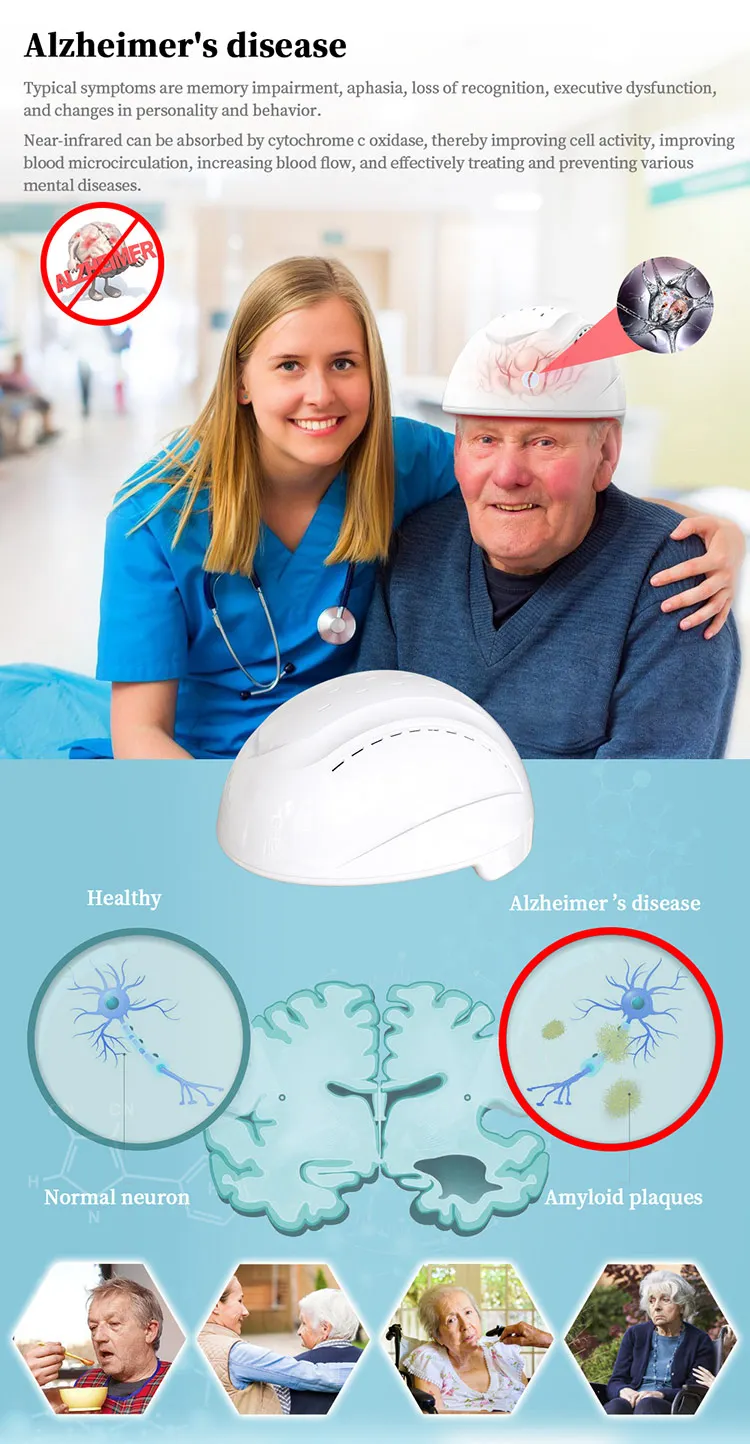
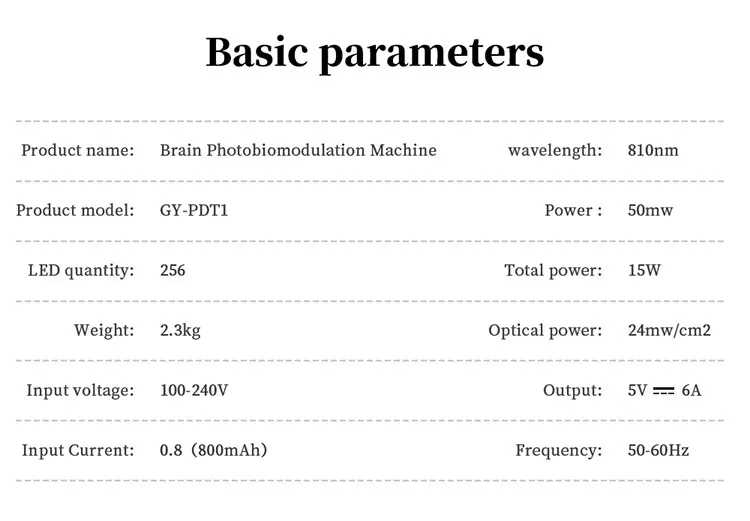
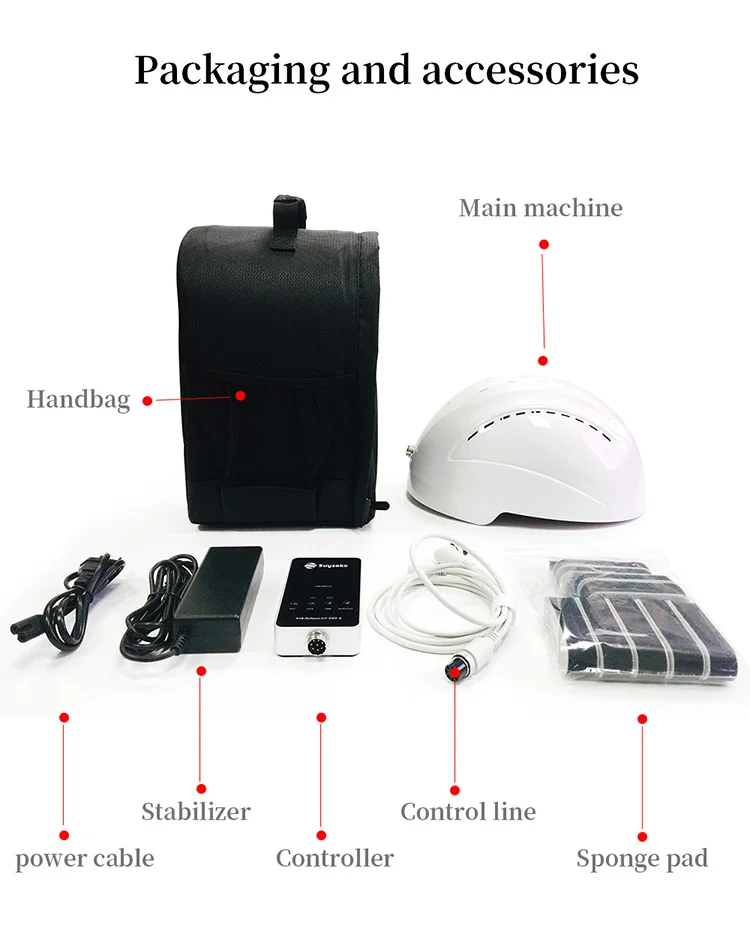
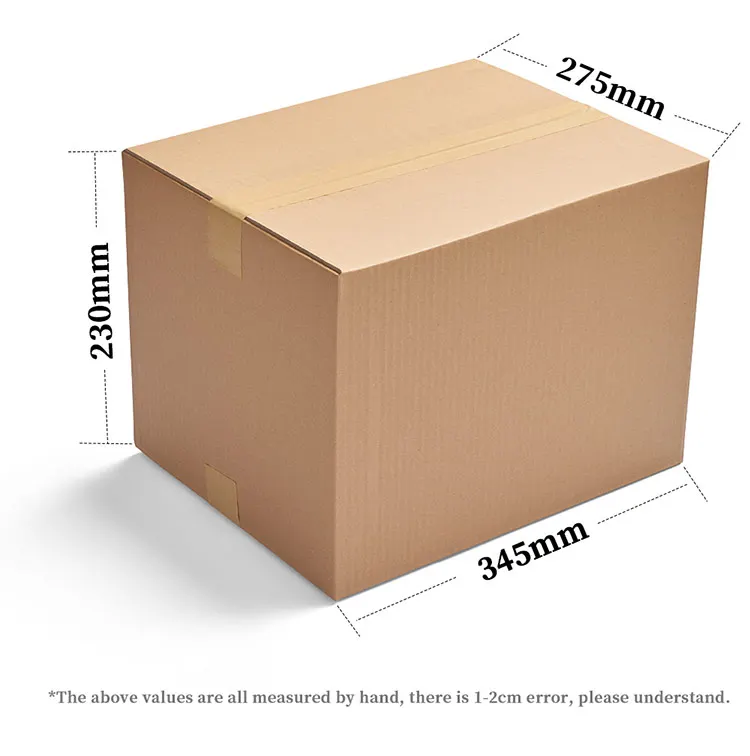
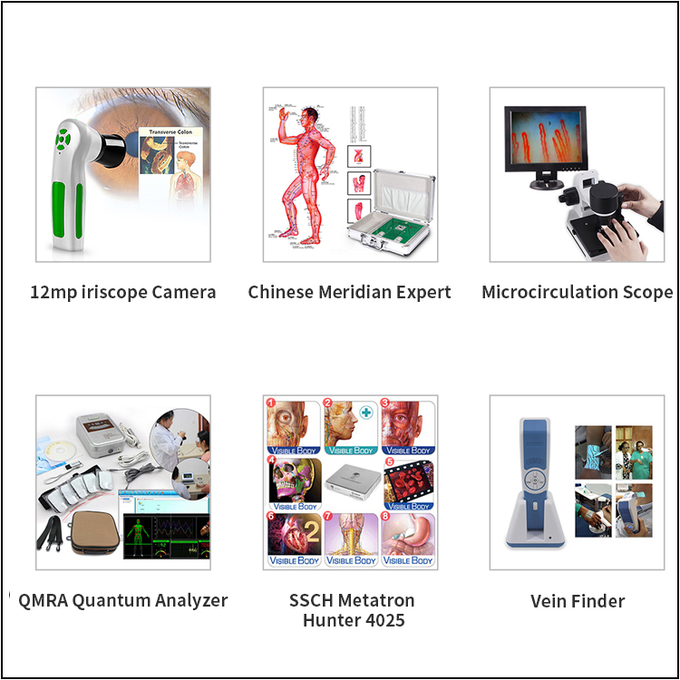
Compared with other therapy method, like drugs, light therapy is the most safe and no side effects way for treatment.
Light therapy was known in medical field for a long time, especially for the red light and infrared.
All our clients feel good spirit and comfortable after using.
Our device works with 810nm infrared, it can extend through the skull into the brain, offers an unique array of neurological benefits. It usually be used for treating metastatic lesions in deep tissues as well as in bones. And also be used for cancer cell imaging, as well as circulating tumor cell detection and destruction.
1.The 810 nm wavelength has the ability to extend through the skull to the brain, promoting recovery from traumatic brain injury and reducing long-term nerve damage.
2.810nm wavelength can help patients with severe depression and anxiety
3. NIR light is absorbed by cytochrome C oxidase in mitochondria.
4. Increased blood flow, energy, neuroprotection and less inflammation.
5. treat traumatic (stroke, TBI), neurodegenerative and psychiatric diseases.
{{item.displayed_price.unit_prefix}} {{item.displayed_price.min}}
{{item.displayed_price.unit_prefix}}
{{item.displayed_price.original_min}}
United States
Carrier
CostDelivery TimeTracking
Company
CostTime
{{ shipitem.name }}
Free Shipping To Be Negotiated {{detail_data.currency.unit_prefix}} {{shipitem.price}} {{shipitem.datemin}}-{{shipitem.datemax}} days Available
{{reply_items.text}}By {{reply_items.author}}